Menu
- Home
- Internal & External Doors, Frames & Skirtings
- New Additions & Ironmongery By Brand
- Door Furniture By Category
- Hinges, Sliding Gear, Door Closers & Controls
- Locks & Security Devices for Doors, Gates & Cubicles
- Panic, Fire, Smoke, Weather & Ventilators
- Cabinet Fittings, Wardrobe Rails & Shelving
- Window Fittings, Draught Proofing & Security
- Bathroom, Electrical, Curtain & Household
- Fixings, Tools & Consumables
- Quick Order Form
- Contact Us
- Terms & Conds
- Login
- Recent Orders
- Home
- Phone: 0131 444 1149
- Quick Order Form
- Contact Us
- Terms & Conds
- Login
- Recent Orders
Which Hinge Should I Use?
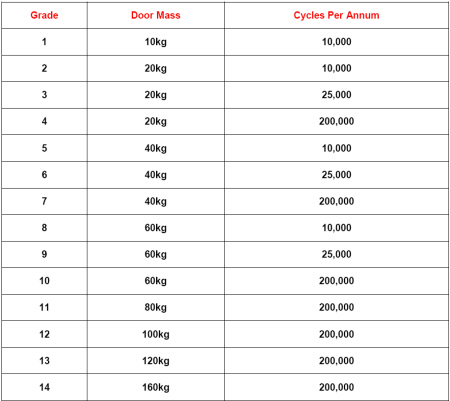
THE FIRST AND MOST IMPORTANT ITEM OF IRONMONGERY FITTED TO A DOOR, BETTER TO OVER-SPECIFY THAN UNDER-SPECIFY, BUT TO GET IT RIGHT, PLEASE REFER TO OUR USAGE CHART WHICH MAKES REFERENCE TO THE WIDTH AND WEIGHT OF A DOOR, THE EFFECT OF FITTING A DOOR CLOSER AND THE FREQUENCY OF USE. ALL OF THESE FACTORS INFLUENCE THE SELECTION OF THE HINGES TO BE USED.
SPECIAL NOTE ON FINISHES ON STEEL: Only two finishes are recommended for external use: Hot Spelter Galvanized or Sherardised - do not use Zinc Plated or other plated finishes.
OTHER MATERIALS SUITABLE FOR EXTERNAL USE: Fully Stainless Steel, Brass & Brass with washers - do not use steel washered hinges.
FIRE DOORS: Hinges used on fire doors should be made from materials having a melting point of at least 800 degrees c. Suitable examples are: steel (1371 degrees c), stainless steel (1371 degrees c), brass (900/920 degrees c) and phosphor bronze (900/912 degrees c). Unsuitable: aluminium (650 degrees c).
OTHER IMPORTANT FACTORS: Three hinges, equally spaced, should be used to resist deformation of the door. It is necessary to check the width of the hinge leaf in relation to the door thickness to ensure that sufficient timber to provide a fire resistant barrier is left between the hinge rebate and the edge of the door. For full specialist advice please refer to the publications:
ABHM Code of Practice for Hardware Essential to the Optimum Performance of Fire Resisting Timber Doorsets' 1 and Code of Practice Architectural Ironmongery Suitable for Use on Fire Resisting Self Closing Timber and Emergency Exit Doors.
A large range of hinge types are available. Most varieties are made in different sizes and strengths; many are made in different kinds of materials and construction. The following alphabetical list states the types most commonly used today.
ANTI-LIGATURE HINGE: A special hinge mainly used in institutions where inmates might self-harm. The top and bottom of the hinge knuckle is slanted or chamfered to prevent the attachment of a cord or other similar article. Others have security plates, which fit over the screws and are themselves screwed through the hinge using screws which require a special tool to remove.
BACKFLAP: Like a butt hinge but wider across the flap than the knuckle length. Fixed pin only.
BALL BEARING HINGES: Most commonly used architectural hinge, the joints have small sets of ball races instead of being plain or washered. If they are to be used on fire doors ensure that the hinge used has been tested to the appropriate Fire Standard (BS EN 1634) and has attained CE marked status.
BROAD BUTTS: For use on heavy doors, which are in excess of 50mm thick. The door thickness and weight must be stated when ordering.
BROAD and NARROW BUTT HINGE: For use on heavy doors which are not thick, the narrow leaf being fitted to the door.
BUTT HINGE: The type of hinge most commonly used. The length of the knuckle is usually greater than the width across the two flaps when open. It is usual to fit three hinges per door for weight carrying and to help to prevent twisting. The leaf with the greater number of knuckles should always be fitted to the doorframe and not the door. Some types available in fixed, loose pin and lift off versions.
CABINET HINGE: Various types to suit cabinet construction.
CENTRE HINGE: A special application hinge for the furniture industry.
CENTRE PIVOT HINGE: Versions available for special opening toilet doors and with ball or roller bearings, which can carry very heavy and wide doors & opening screens.
CONCEALED HINGE: Best known is the SOSS hinge. Manufactured in 12 different sizes and 7 finishes (plus specials if required) they are suitable for doors to suit cupboards right through to weighty timber and metal doors. There is a ½ hour fire rated model and the all stainless steel hinge has passed the 1hour test. A matching hinge with an integral closer can be used on ½ hour Fire Rated doors.
CONDUCTOR HINGE: Incorporates between 2 and 12 electrical conductor wires. This facility allows the easy transference of power to the door leaf to activate, for example, a solenoid lock case or other door monitoring or security device. The conductor / power transfer hinge completely conceals the fact that the door leaf is powered and is better than other options for aesthetic or security reasons. These hinges are treated as non-load bearing.
CONTINUOUS HINGE: Like a piano hinge, but much heavier and stronger. Can be supplied drilled for screw fixing or un-drilled for welding to metal doors. Used on metal doors to secure areas with the hinge the full length of the door to prevent forced entry.
COUNTER FLAP HINGE: Made with a centre support in the knuckle to make the two leaves of the hinge lie flat when in the open position. This gives a flat surface on top when the counter flap is closed.
DESK HINGE: Another special application hinge, available in three sizes 76, 102 & 127mm.
DOG BOLT HINGE: This is a security hinge, which incorporates an 11 or 12mm stud fitted into the leaf, which screws to the door. When the door is closed the stud locates through a hole in the frame hinge leaf and into a corresponding hole in the door frame. This hinge is useful for opening 'out' doors where the hinge knuckle could be attacked and the pin removed or the hinge knuckle cut through and the door levered out of the frame. The stud prevents this by keeping the door secure in the frame.
FALLING BUTT HINGE: This makes the door stand in the open position when for instance a toilet cubicle is not in use. A buffer should be fitted to the wall to prevent damage from any projecting piece of ironmongery such as an indicator bolt or a handle.
FLUSH HINGE: Fits in the gap between the door and the standard. It is a single-thickness hinge, which has cut out outer and inner parts to it. The outer part is fitted to the door standard and the inner is fitted to the door. It is generally used on light doors and cabinets the full knuckle sits over the frame. A special HI-LOAD version is available to carry doors with a maximum adjusted weight of 80kg.
HELICAL SPRING HINGE: Available in single and double action the door is always returned to the closed position after the action of opening the door puts tension on the coil spring. There is no check action on these hinges so they can be noisy and potentially dangerous especially to children.
HI-LOAD HINGE: As the name implies, these hinges are made to carry doors which would be too heavy for normal hinges. They are manufactured to very high standards using the best materials and incorporate special lubricant impregnated flanges, which will not wear. These carry a 25 year guarantee.
HOOK AND BAND HINGE: For garden gates, field gates, garage doors etc. The hook part, which has a pin, is fitted to the gate post and the band which has an eye to fit over the pin, to the door or gate.
HURLINGE: Constructed in two parts from a single thickness of metal like the flush hinge, but made from thicker material to carry slightly heavier doors. The flaps of this hinge are cranked so that the knuckle sits in the middle between the door and the frame and it incorporates locating lugs, which rest against the frame to position the hinge properly. Available in fixed pin and loose pin types.
LIFT OFF HINGE: As the name suggests, this hinge allows the door to be lifted off. The leaf with the pin is screwed to the door-frame, they are handed. Lift off, loose pin and snap in hinges, are not allowed by some authorities on fire doors, because they are too easy to remove.
LOOSE PIN HINGE: This hinge can be separated and the door lifted clear of the frame simply by knocking up the pin, usually with a knob at the end and pulling it clear. Non-handed, the leaf with the most knuckles goes on the frame. Not recommended for fire doors.
NARROW BUTT HINGE: For use on thin doors. Please check door thickness and use when ordering.
PARLIAMENT HINGE: A projection type hinge which allows a door or shutter to swing open through 180 degrees clearing projections such as thick architraves or skirting. This hinge has long leaves, but short knuckle, which limits the carrying capacity. Having said that, some are available manufactured from 5mm thick brass, which will carry doors up to 60kg with three hinges fitted.
PIANO HINGE: A long narrow butt hinge, standard stock length 1829mm (72"). The width is measured in the open position ie.1829x32mm open.
PIVOT REINFORCED HINGE: A special top hinge with an extended right angled support. The hinge fits right into and is screwed to the top corner of the frame, the extended support is screwed to the transom of the door frame giving a very secure fixing. Maximum adjusted door weights of up to 160kg. Supplied left or right hand.
PROJECTION HINGE: Serves the same purpose as a parliament hinge, but has a full-length knuckle, can carry heavier doors and is available in extra wide sizes. Please state door thickness, weight and size of projection to be overcome.
RISING BUTT HINGE: This hinge does the opposite to the falling hinge, rising when the door is opened and closing when the door is released. This hinge has no controlled closing mechanism, so the door, making contact with the door-stop, can be noisy. There is a damper device available, which is fitted to the door and the frame at the hinge side and this cushions the impact.
SCREEN HINGE: One with two or more joints or knuckles to allow one leaf of a screen to fold on to another.
SNAP IN HINGES: A convenient type of hinge used by door manufactures for doors in timber kits. They are in two pieces, one screwed to the frame and the other on the door. The door part has a spring loaded tongue which pushes into a slot in the frame part, providing a strong solid support for the door. Not recommended for fire doors.
STORMPROOF HINGE: A cranked hinge used on vent lights and casement windows.
SPRING HINGE: HAWGOOD hinges, spring & blank. This type of door closing device has been around for a very long time, but it does the job. They are most suitable for frequently used swing doors with the door returning quickly to the closed position and being held there until the next user opens it again. The edge of the door fits closely to the frame and, in the open position leaves the widest possible clear passage. Larger hinges are available with or without hold open function at about 90 degrees. Each hinge is constructed from a 'U' shaped shoe - which the door stile fits into - and spring loaded cylinder (s) which project from the rear of the shoe and are morticed into the door frame. Sizes available for small doors from 20 - 30 mm thick and large doors from 39 - 50mm thick. Width up to 930mm wide and from 22 - 100Kg in weight. For more information please .
STRAP HINGE: A hinge with equal tapered legs has a variety of uses including for folding doors and a cranked version for packing cases.
SWING CLEAR HINGE: Swings the door, clear of the frame even in the 90 degree position. Used to improve access through door openings to allow wide objects such as hospital beds to pass through without damaging the door or the equipment.
TEE HINGE: Face fixed to the door and frame it is particularly suitable for garden gates or light framed and lined type doors. Available from 100mm to 600mm in length and in light, medium, strong and weighty patterns.
TRESTLE JOINT HINGE: A combined stay and hinge for use on trestles. They have a stop to restrict the amount the hinge can open.
SPECIAL NOTE ON FINISHES ON STEEL: Only two finishes are recommended for external use: Hot Spelter Galvanized or Sherardised - do not use Zinc Plated or other plated finishes.
OTHER MATERIALS SUITABLE FOR EXTERNAL USE: Fully Stainless Steel, Brass & Brass with washers - do not use steel washered hinges.
FIRE DOORS: Hinges used on fire doors should be made from materials having a melting point of at least 800 degrees c. Suitable examples are: steel (1371 degrees c), stainless steel (1371 degrees c), brass (900/920 degrees c) and phosphor bronze (900/912 degrees c). Unsuitable: aluminium (650 degrees c).
OTHER IMPORTANT FACTORS: Three hinges, equally spaced, should be used to resist deformation of the door. It is necessary to check the width of the hinge leaf in relation to the door thickness to ensure that sufficient timber to provide a fire resistant barrier is left between the hinge rebate and the edge of the door. For full specialist advice please refer to the publications:
ABHM Code of Practice for Hardware Essential to the Optimum Performance of Fire Resisting Timber Doorsets' 1 and Code of Practice Architectural Ironmongery Suitable for Use on Fire Resisting Self Closing Timber and Emergency Exit Doors.
TYPES
A large range of hinge types are available. Most varieties are made in different sizes and strengths; many are made in different kinds of materials and construction. The following alphabetical list states the types most commonly used today.
ANTI-LIGATURE HINGE: A special hinge mainly used in institutions where inmates might self-harm. The top and bottom of the hinge knuckle is slanted or chamfered to prevent the attachment of a cord or other similar article. Others have security plates, which fit over the screws and are themselves screwed through the hinge using screws which require a special tool to remove.
BACKFLAP: Like a butt hinge but wider across the flap than the knuckle length. Fixed pin only.
BALL BEARING HINGES: Most commonly used architectural hinge, the joints have small sets of ball races instead of being plain or washered. If they are to be used on fire doors ensure that the hinge used has been tested to the appropriate Fire Standard (BS EN 1634) and has attained CE marked status.
BROAD BUTTS: For use on heavy doors, which are in excess of 50mm thick. The door thickness and weight must be stated when ordering.
BROAD and NARROW BUTT HINGE: For use on heavy doors which are not thick, the narrow leaf being fitted to the door.
BUTT HINGE: The type of hinge most commonly used. The length of the knuckle is usually greater than the width across the two flaps when open. It is usual to fit three hinges per door for weight carrying and to help to prevent twisting. The leaf with the greater number of knuckles should always be fitted to the doorframe and not the door. Some types available in fixed, loose pin and lift off versions.
CABINET HINGE: Various types to suit cabinet construction.
CENTRE HINGE: A special application hinge for the furniture industry.
CENTRE PIVOT HINGE: Versions available for special opening toilet doors and with ball or roller bearings, which can carry very heavy and wide doors & opening screens.
CONCEALED HINGE: Best known is the SOSS hinge. Manufactured in 12 different sizes and 7 finishes (plus specials if required) they are suitable for doors to suit cupboards right through to weighty timber and metal doors. There is a ½ hour fire rated model and the all stainless steel hinge has passed the 1hour test. A matching hinge with an integral closer can be used on ½ hour Fire Rated doors.
CONDUCTOR HINGE: Incorporates between 2 and 12 electrical conductor wires. This facility allows the easy transference of power to the door leaf to activate, for example, a solenoid lock case or other door monitoring or security device. The conductor / power transfer hinge completely conceals the fact that the door leaf is powered and is better than other options for aesthetic or security reasons. These hinges are treated as non-load bearing.
CONTINUOUS HINGE: Like a piano hinge, but much heavier and stronger. Can be supplied drilled for screw fixing or un-drilled for welding to metal doors. Used on metal doors to secure areas with the hinge the full length of the door to prevent forced entry.
COUNTER FLAP HINGE: Made with a centre support in the knuckle to make the two leaves of the hinge lie flat when in the open position. This gives a flat surface on top when the counter flap is closed.
DESK HINGE: Another special application hinge, available in three sizes 76, 102 & 127mm.
DOG BOLT HINGE: This is a security hinge, which incorporates an 11 or 12mm stud fitted into the leaf, which screws to the door. When the door is closed the stud locates through a hole in the frame hinge leaf and into a corresponding hole in the door frame. This hinge is useful for opening 'out' doors where the hinge knuckle could be attacked and the pin removed or the hinge knuckle cut through and the door levered out of the frame. The stud prevents this by keeping the door secure in the frame.
FALLING BUTT HINGE: This makes the door stand in the open position when for instance a toilet cubicle is not in use. A buffer should be fitted to the wall to prevent damage from any projecting piece of ironmongery such as an indicator bolt or a handle.
FLUSH HINGE: Fits in the gap between the door and the standard. It is a single-thickness hinge, which has cut out outer and inner parts to it. The outer part is fitted to the door standard and the inner is fitted to the door. It is generally used on light doors and cabinets the full knuckle sits over the frame. A special HI-LOAD version is available to carry doors with a maximum adjusted weight of 80kg.
HELICAL SPRING HINGE: Available in single and double action the door is always returned to the closed position after the action of opening the door puts tension on the coil spring. There is no check action on these hinges so they can be noisy and potentially dangerous especially to children.
HI-LOAD HINGE: As the name implies, these hinges are made to carry doors which would be too heavy for normal hinges. They are manufactured to very high standards using the best materials and incorporate special lubricant impregnated flanges, which will not wear. These carry a 25 year guarantee.
HOOK AND BAND HINGE: For garden gates, field gates, garage doors etc. The hook part, which has a pin, is fitted to the gate post and the band which has an eye to fit over the pin, to the door or gate.
HURLINGE: Constructed in two parts from a single thickness of metal like the flush hinge, but made from thicker material to carry slightly heavier doors. The flaps of this hinge are cranked so that the knuckle sits in the middle between the door and the frame and it incorporates locating lugs, which rest against the frame to position the hinge properly. Available in fixed pin and loose pin types.
LIFT OFF HINGE: As the name suggests, this hinge allows the door to be lifted off. The leaf with the pin is screwed to the door-frame, they are handed. Lift off, loose pin and snap in hinges, are not allowed by some authorities on fire doors, because they are too easy to remove.
LOOSE PIN HINGE: This hinge can be separated and the door lifted clear of the frame simply by knocking up the pin, usually with a knob at the end and pulling it clear. Non-handed, the leaf with the most knuckles goes on the frame. Not recommended for fire doors.
NARROW BUTT HINGE: For use on thin doors. Please check door thickness and use when ordering.
PARLIAMENT HINGE: A projection type hinge which allows a door or shutter to swing open through 180 degrees clearing projections such as thick architraves or skirting. This hinge has long leaves, but short knuckle, which limits the carrying capacity. Having said that, some are available manufactured from 5mm thick brass, which will carry doors up to 60kg with three hinges fitted.
PIANO HINGE: A long narrow butt hinge, standard stock length 1829mm (72"). The width is measured in the open position ie.1829x32mm open.
PIVOT REINFORCED HINGE: A special top hinge with an extended right angled support. The hinge fits right into and is screwed to the top corner of the frame, the extended support is screwed to the transom of the door frame giving a very secure fixing. Maximum adjusted door weights of up to 160kg. Supplied left or right hand.
PROJECTION HINGE: Serves the same purpose as a parliament hinge, but has a full-length knuckle, can carry heavier doors and is available in extra wide sizes. Please state door thickness, weight and size of projection to be overcome.
RISING BUTT HINGE: This hinge does the opposite to the falling hinge, rising when the door is opened and closing when the door is released. This hinge has no controlled closing mechanism, so the door, making contact with the door-stop, can be noisy. There is a damper device available, which is fitted to the door and the frame at the hinge side and this cushions the impact.
SCREEN HINGE: One with two or more joints or knuckles to allow one leaf of a screen to fold on to another.
SNAP IN HINGES: A convenient type of hinge used by door manufactures for doors in timber kits. They are in two pieces, one screwed to the frame and the other on the door. The door part has a spring loaded tongue which pushes into a slot in the frame part, providing a strong solid support for the door. Not recommended for fire doors.
STORMPROOF HINGE: A cranked hinge used on vent lights and casement windows.
SPRING HINGE: HAWGOOD hinges, spring & blank. This type of door closing device has been around for a very long time, but it does the job. They are most suitable for frequently used swing doors with the door returning quickly to the closed position and being held there until the next user opens it again. The edge of the door fits closely to the frame and, in the open position leaves the widest possible clear passage. Larger hinges are available with or without hold open function at about 90 degrees. Each hinge is constructed from a 'U' shaped shoe - which the door stile fits into - and spring loaded cylinder (s) which project from the rear of the shoe and are morticed into the door frame. Sizes available for small doors from 20 - 30 mm thick and large doors from 39 - 50mm thick. Width up to 930mm wide and from 22 - 100Kg in weight. For more information please .
STRAP HINGE: A hinge with equal tapered legs has a variety of uses including for folding doors and a cranked version for packing cases.
SWING CLEAR HINGE: Swings the door, clear of the frame even in the 90 degree position. Used to improve access through door openings to allow wide objects such as hospital beds to pass through without damaging the door or the equipment.
TEE HINGE: Face fixed to the door and frame it is particularly suitable for garden gates or light framed and lined type doors. Available from 100mm to 600mm in length and in light, medium, strong and weighty patterns.
TRESTLE JOINT HINGE: A combined stay and hinge for use on trestles. They have a stop to restrict the amount the hinge can open.

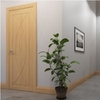 Internal Doors
Internal Doors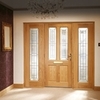 External Doors
External Doors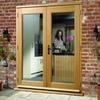 Patio & French Doors
Patio & French Doors Frames, Skirtings & Accessories
Frames, Skirtings & Accessories New & Latest
New & Latest Format
Format Alexander & Wilks
Alexander & Wilks Astra Door Controls
Astra Door Controls Atlantic Hardware
Atlantic Hardware Assa Abloy
Assa Abloy Burlington
Burlington Carlisle Brass
Carlisle Brass Delamain
Delamain Eurospec
Eurospec Fingertip Design
Fingertip Design Forme
Forme Fortessa
Fortessa From The Anvil
From The Anvil From The Anvil Home & Garden
From The Anvil Home & Garden From The Anvil Lighting
From The Anvil Lighting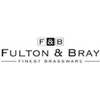 Fulton & Bray
Fulton & Bray Hafele
Hafele Heritage Brass
Heritage Brass Jedo
Jedo Mediterranean
Mediterranean Old English
Old English Rosso Tecnica
Rosso Tecnica Senza Pari
Senza Pari Serozzetta
Serozzetta Sorrento
Sorrento Status
Status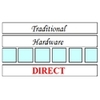 Traditional Hardware Direct
Traditional Hardware Direct Zoo Hardware
Zoo Hardware Lever Handles On Roses
Lever Handles On Roses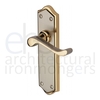 Lever Handles On Backplates
Lever Handles On Backplates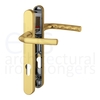 Multi-Point Lock Furniture
Multi-Point Lock Furniture Knob Handles On Roses
Knob Handles On Roses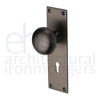 Knob Handles On Backplates
Knob Handles On Backplates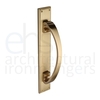 Pull Handles
Pull Handles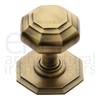 Centre Door Knobs
Centre Door Knobs Edinburgh Pattern Handles
Edinburgh Pattern Handles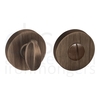 Bathroom Turns
Bathroom Turns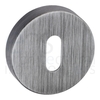 Escutcheons
Escutcheons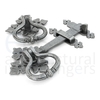 Traditional Latch Sets
Traditional Latch Sets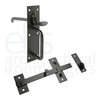 Gate Handles & Catches
Gate Handles & Catches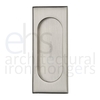 Flush Handles
Flush Handles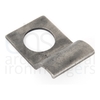 Cylinder Pulls
Cylinder Pulls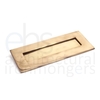 Letter Plates & Accessories
Letter Plates & Accessories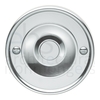 Bell Pushes
Bell Pushes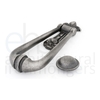 Door Knockers
Door Knockers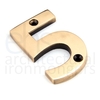 Door Numerals
Door Numerals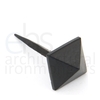 Door Studs
Door Studs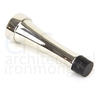 Door Stops
Door Stops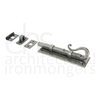 Surface Door Bolts, Espagnolettes & Sockets
Surface Door Bolts, Espagnolettes & Sockets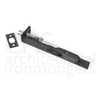 Flush Door Bolts
Flush Door Bolts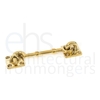 Cabin Hooks
Cabin Hooks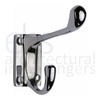 Coat Hooks
Coat Hooks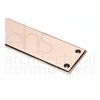 Finger & Kick Plates
Finger & Kick Plates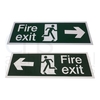 Signage
Signage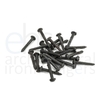 Accessories & Spares
Accessories & Spares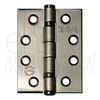 Door Hinges
Door Hinges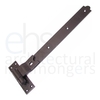 Gate Hinges
Gate Hinges Sliding & Folding Gear
Sliding & Folding Gear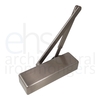 Overhead Door Closers
Overhead Door Closers Concealed & Transom Door Closers
Concealed & Transom Door Closers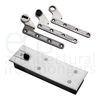 Floor Springs, Pivots & Accessories
Floor Springs, Pivots & Accessories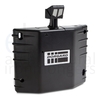 Holders, Restrictors & Selectors
Holders, Restrictors & Selectors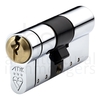 Cylinders
Cylinders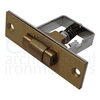 Roller Catches
Roller Catches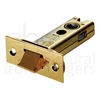 Latches
Latches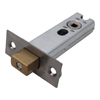 Deadbolts
Deadbolts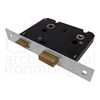 Bathroom Locks
Bathroom Locks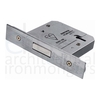 Deadlocks
Deadlocks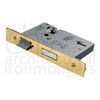 Sashlocks
Sashlocks Mortice Nightlatches
Mortice Nightlatches Euro Standard DIN Locks
Euro Standard DIN Locks ASSA Modular Lock Cases
ASSA Modular Lock Cases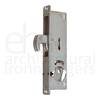 Metal Door Locks & Accessories
Metal Door Locks & Accessories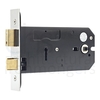 Horizontal Locks & Latches
Horizontal Locks & Latches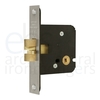 Sliding Door Locks
Sliding Door Locks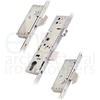 Multi-Point Locks
Multi-Point Locks Rim Nightlatches
Rim Nightlatches Rim Locks
Rim Locks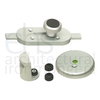 Cubicle Slide & Turn Bolts
Cubicle Slide & Turn Bolts Gate, Garage & Shutter Locks
Gate, Garage & Shutter Locks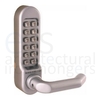 Access Control
Access Control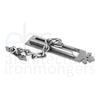 Secondary Door Security
Secondary Door Security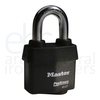 Padlocks, Padbolts, Hasps & Chain
Padlocks, Padbolts, Hasps & Chain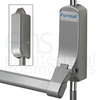 Panic Hardware
Panic Hardware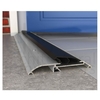 Threshold Seals
Threshold Seals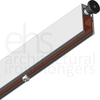 Acoustic & Drop Down Seals
Acoustic & Drop Down Seals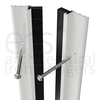 Perimeter Seals
Perimeter Seals Joinery Seals
Joinery Seals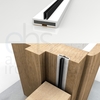 Intumescent Seals & Fire Products
Intumescent Seals & Fire Products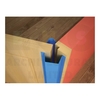 Finger Guards
Finger Guards Floor & Carpet Trims
Floor & Carpet Trims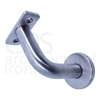 Grab Rails, Handrails & Brackets
Grab Rails, Handrails & Brackets Ventilators
Ventilators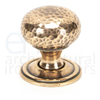 Cabinet Knobs
Cabinet Knobs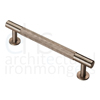 Cabinet Pull Handles
Cabinet Pull Handles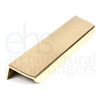 Cabinet Edge Pull Handles
Cabinet Edge Pull Handles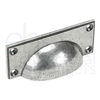 Cabinet Cup Handles
Cabinet Cup Handles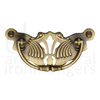 Cabinet Drop Handles
Cabinet Drop Handles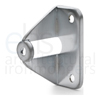 Cabinet Handle Accessories
Cabinet Handle Accessories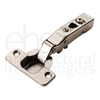 Cabinet Hinges
Cabinet Hinges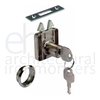 Cabinet Locks
Cabinet Locks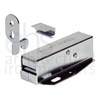 Cabinet & Magnetic Catches
Cabinet & Magnetic Catches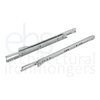 Drawer Runners
Drawer Runners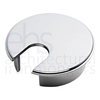 Cabinet Accessories
Cabinet Accessories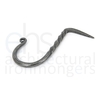 Cabinet & Cup Hooks
Cabinet & Cup Hooks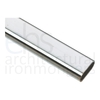 Wardrobe Rails & Fittings
Wardrobe Rails & Fittings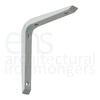 Shelving
Shelving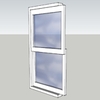 Sash & Case Fittings
Sash & Case Fittings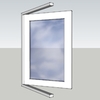 Casement Window Fittings
Casement Window Fittings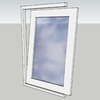 Espagnolette & Tilt Turn Fittings
Espagnolette & Tilt Turn Fittings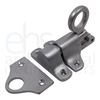 Fanlight Fittings
Fanlight Fittings Window Restrictors
Window Restrictors Universal Window Security
Universal Window Security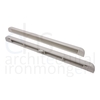 Slot & Trim Vents
Slot & Trim Vents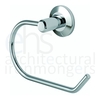 Bathroom Accessories
Bathroom Accessories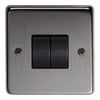 Switches & Sockets
Switches & Sockets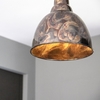 Lighting
Lighting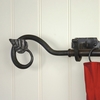 Curtain Fittings
Curtain Fittings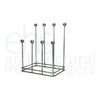 Boot Racks
Boot Racks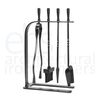 Fireplace Fittings
Fireplace Fittings Architectural Metal Sinks
Architectural Metal Sinks Architectural Metal Plant Pots & Vases
Architectural Metal Plant Pots & Vases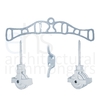 Traditional Laundry Pulley Fittings
Traditional Laundry Pulley Fittings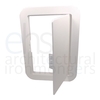 Plastic Access Panels
Plastic Access Panels Meter Box & Radiator Keys
Meter Box & Radiator Keys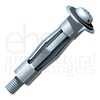 Screws & Fixings
Screws & Fixings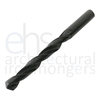 Drills For Metal
Drills For Metal Drills For Wood
Drills For Wood Drills For Glass & Tiles
Drills For Glass & Tiles Drills For Brick & Block
Drills For Brick & Block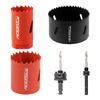 Hole Saws & Arbours
Hole Saws & Arbours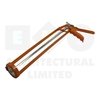 Caulking Guns
Caulking Guns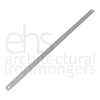 Knives, Scrapers & Blades
Knives, Scrapers & Blades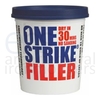 Fillers & Caulks
Fillers & Caulks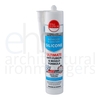 Sealants & Silicones
Sealants & Silicones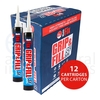 Adhesives
Adhesives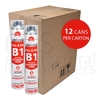 Foam & Accessories
Foam & Accessories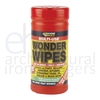 Wipes & Cleaning Materials
Wipes & Cleaning Materials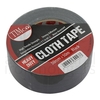 Tapes
Tapes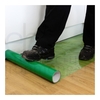 Surface Protection
Surface Protection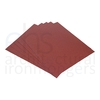 Abrasives
Abrasives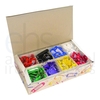 Plastic Key Tallies With Write On Labels
Plastic Key Tallies With Write On Labels

